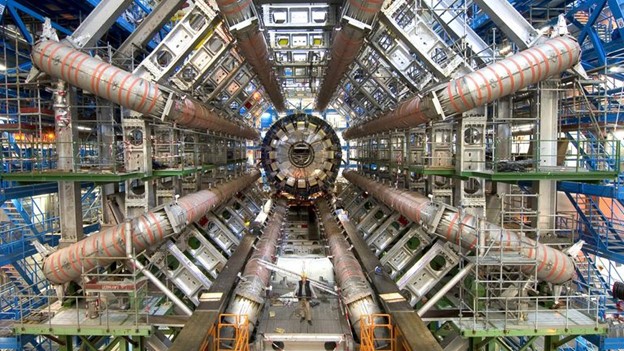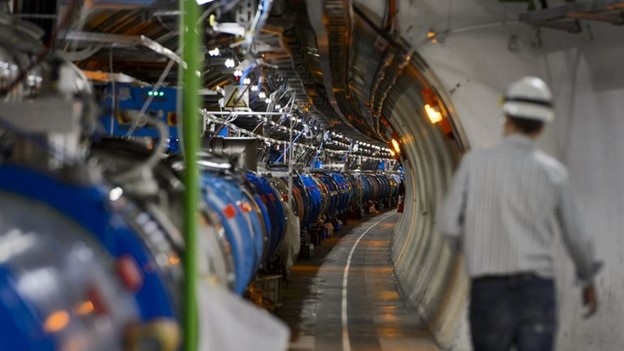Large Hadron Collider Comes Back to Life After Three-year Hiatus
 The world's most powerful particle accelerator—the Large Hadron Collider (LHC)—has sprung back to life after a three-year shutdown. After planned maintenance and upgrades, the Large Hadron Collider has been turned back on and will shortly start another run of cutting-edge experiments. The LHC, in Switzerland, was switched off in December 2018 to let scientists and engineers from around the world make it even more powerful. The accelerator at the European Organization for Nuclear Research (CERN) accelerates subatomic particles to almost the speed of light, before smashing them into each other.
The world's most powerful particle accelerator—the Large Hadron Collider (LHC)—has sprung back to life after a three-year shutdown. After planned maintenance and upgrades, the Large Hadron Collider has been turned back on and will shortly start another run of cutting-edge experiments. The LHC, in Switzerland, was switched off in December 2018 to let scientists and engineers from around the world make it even more powerful. The accelerator at the European Organization for Nuclear Research (CERN) accelerates subatomic particles to almost the speed of light, before smashing them into each other.
It consists of a 27 km ring of superconducting magnets with a number of accelerating structures to boost the energy of the particles along the way. In 2012, the LHC confirmed the discovery of the Higgs boson particle, which along with an associated force field, allowed researchers to better understand where matter gets its mass from. After planned maintenance and upgrades, the LHC will shortly start another run of cutting-edge physics experiments.
 Recently, particles were pushed through the colliders ring for the first time since December 2018, but it will take six to eight weeks for the LHC to get up to full speed where proton collisions can take place again. Head of CERN's Beams Department, Rhodri Jones, said, “These beams circulated at injection energy and contained a relatively small number of protons.” He added that high-intensity and high-energy collisions are a couple of months away, but the first beams represent the “successful restart of the accelerator.”
Recently, particles were pushed through the colliders ring for the first time since December 2018, but it will take six to eight weeks for the LHC to get up to full speed where proton collisions can take place again. Head of CERN's Beams Department, Rhodri Jones, said, “These beams circulated at injection energy and contained a relatively small number of protons.” He added that high-intensity and high-energy collisions are a couple of months away, but the first beams represent the “successful restart of the accelerator.”
While pilot beams circulated in the LHC for a short time last October, the beams that circulated on Friday marked the beginning of preparations for four years of physics data taking, expected to start this summer. This third run of the LHC, called Run 3, will see the machine's experiments collecting data from collisions not only at a record energy but also in unparalleled numbers.
As part of the international effort, UK teams have helped improve the performance of each of the accelerators four main instruments. UK contributions to the upgrade are worth more than £25m, funded by the Science and Technology Facilities Council (STFC).
STFC Executive Chairman, Professor Mark Thomson, said, “The global science community will now eagerly await the results from the new run.”
Image 1. The UK's contributions to the upgrade are worth more than £25m. Credit: CERN
Image 2: The LHC consists of a 27km ring of superconducting magnets. Credit: CERN


